Goaltide Daily Current Affairs
Current Affair 1:
Spike vs Nag Missile Systems
Defence Research and Development Organisation recently trashed reports that Israeli Spike anti-tank guided missile (ATGM) was superior to an under-development DRDO weapon- Nag Missile Systems.
So, our task is to learn about Nag Missiles.
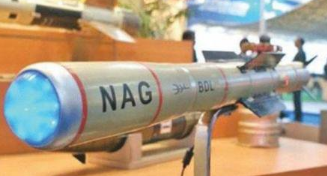
The Nag missile was indigenously developed under the Indian Ministry of Defence’s integrated guided missile development programme (IGMDP), which also involved the development of four other missiles that are Agni, Akash, Trishul and Prithvi.
Nag is a third-generation, fire-and-forget, anti-tank guided missile developed by India’s state-owned Defence Research and Development Organisation (DRDO) to support both mechanized infantry and airborne forces of the Indian Army.
Nag can be launched from land and air-based platforms.
- The land version is currently available for integration on the Nag missile carrier (NAMICA), which is derived from a BMP-2 tracked infantry combat vehicle.
- The helicopter-launched configuration, designated as helicopter-launched NAG (HELINA), can be fired from Dhruv advanced light helicopter (ALH) and HAL Rudra (ALH WSI) attack helicopter.
The weapon can fly at a speed of 230m/s and has the capability to engage both static and moving targets under all weather conditions during the day and at night. The range of the land version is 4km, while HELINA can reach up to 7km.
Just one statement about Spike Missile:
Rafael, based in Haifa, Israel, manufactures the Spike family of anti-armour weapons. The weapons are lightweight fire-and-forget anti-tank missiles and use electro-optical and fiber-optic technologies.
Current Affair 2:
Global Migration Report 2020
This report was published by International Organisation for Migration’s (IOM).
Ok, now we will see some important outcomes of reports through images. Its interesting.
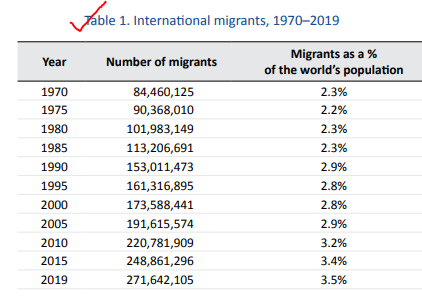
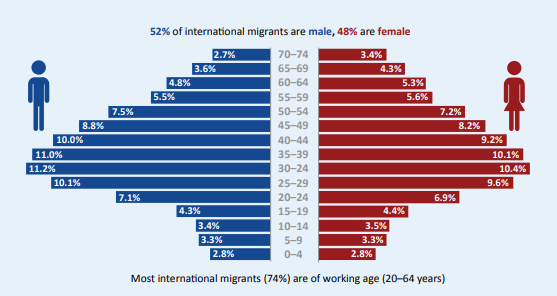




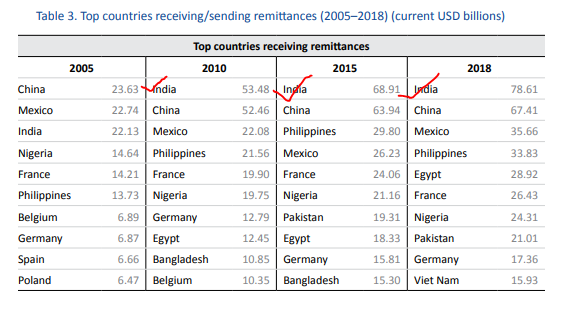

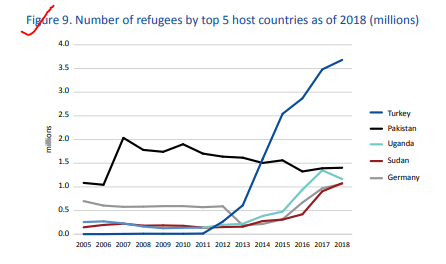
Reasons for such migration:
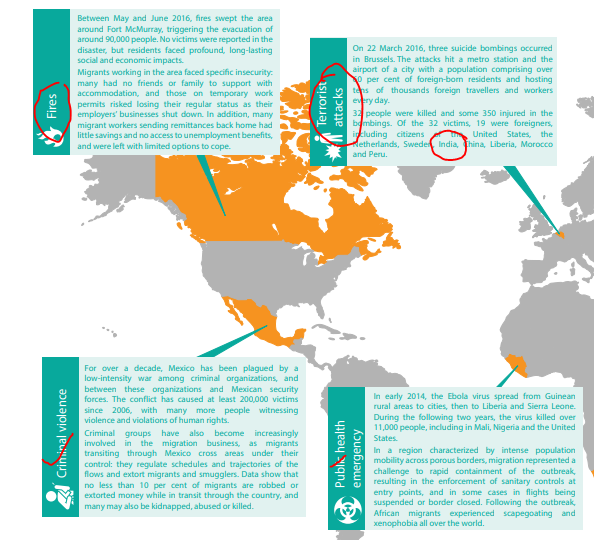

Current Affair 3:
FASTag Deadline Extended
What was in news?
The date for mandatory implementation of fastags has been deferred to 15 December from the current deadline of 1 December. Thus, from 15th December national highway lanes at toll plazas across India will accept toll only through FASTag .

Vehicles entering FASTag lanes without FASTag will be charged twice the toll amount.
We will here lean about FASTags
National Electronic Toll Collection (FASTag) programme, the flagship initiative of Ministry of Roads, Transport and Highways and National Highways Authority of India (NHAI) has been implemented on pan India basis in order to remove bottlenecks and ensure seamless movement of traffic and collection of user fee as per the notified rates, using passive Radio Frequency Identification (RFID) technology.


How does FASTag work?
- Fastags are devices that are primarily based on Radio Frequency Identification (RFID) technology.
- RFID stands for Radio Frequency Identification.
- RFID tag is attached to the windscreen of the vehicle.
- The RFID tag is nothing but a transponder which is programmed with customer details including credit/debit card, payment wallet etc.
- Whenever the vehicle moves past the toll station, an antenna beams a radio wave which is received by the RFID tag which then sends back another radio signal.
- Then the antenna decodes the radio signal to interpret the data which is then sent to control stations for deduction of payment.
- A FASTag is valid for five years and can be recharged as and when required.
- FASTag can be recharged online through Credit Card / Debit Card / NEFT/ RTGS or Net banking.
- It may be noted that as per Government Gazette notification, any vehicle user without a FASTag entering into a “FASTag lane” at a NH fee plaza shall have to pay a fee equivalent to two times of the applicable fees to that category of vehicle.
Benefits of FASTags:
- It enables continuous traffic flow at toll-plazas and thus expected to cut traffic jams in city.
- It will help curb vehicular pollution in the city.
- Efficient collection of toll fee.
- It will reduce loss of fuel while waiting at toll plazas
- It is estimated that India could save up to Rs 12,000 crore every year in terms of fuel and man-hours.
Current Affair 4:
Global EMMISSION Gap Report 2019
It is published annually by United Nation Environment Programme.
The Emissions Gap could also be called the “Commitment Gap”. It measures the gap between what we need to do and what we are actually doing to tackle climate change. The gap is the difference between the low level of emissions that the world needs to drop to, compared with the projected level of emissions based on countries’ current commitments to decarbonization.
The Emissions Gap Report measures and projects three key trendlines:
- The amount of greenhouse gas emissions every year up to 2030.
- The commitments countries are making to reduce their emissions and the impact these commitments are likely to have on overall emission reduction.
- The pace at which emissions must be reduced to reach an emission low that would limit temperature increase to 1.5 degree C, affordably
Now, we will see few important diagrams. Nothing more can be learned from this report. If you read more also, you will forget. So, just try to read the images provided below.
How we are doing?
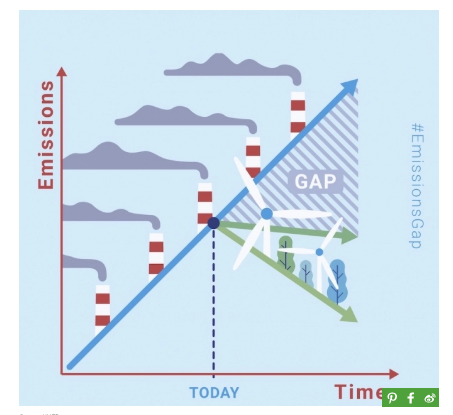
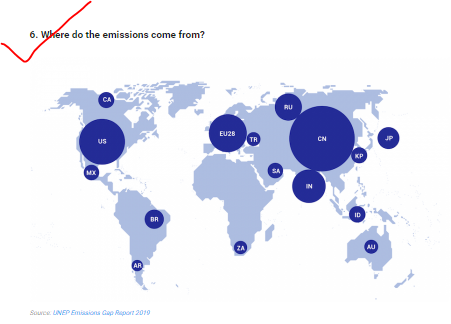
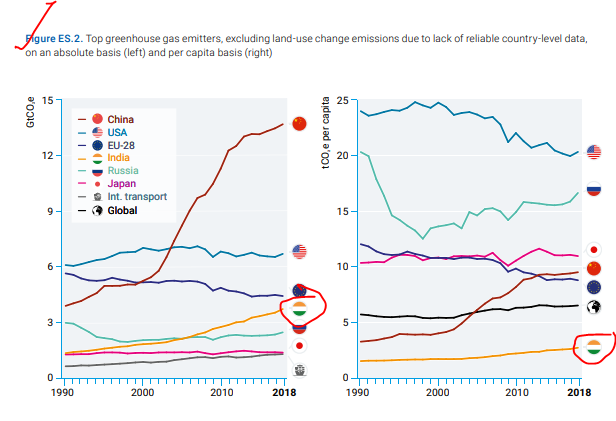

Any topic related to emissions, always remember INDC’s of India. It will be helpful for your mains answer writing also.
India's Intended Nationally Determined Contributions (INDCs) to be achieved primarily, by 2030:
- To reduce the emissions intensity of the GDP by about a third.
- A total of 40% of the installed capacity for electricity will be from non-fossil fuel sources.
- India also promised an additional carbon sink (a means to absorb carbon dioxide from the atmosphere) of 2.5 to 3 billion tonnes of carbon dioxide equivalent through additional forest and tree cover by the year 2030.
Current Affair 5:
Nirbhaya fund
Why this fund was in news?
The Delhi High Court recently directed that the unused Nirbhaya fund should be used to provide security to women and children and help the overburdened Delhi Police.
We will learn some very important points regarding this fund, important for your Prelims exam.
Background:
Violence and abuse against women and girls is frequent on streets, in public transportation and in other public places. Such occurrences restrict women’s right to mobility, discouraging their freedom to walk freely and move in public spaces of their choice. Such violence also limits their access to essential services and adversely impact their health and wellbeing.
In this context, and following the tragedy of December 2012, the Government has set up a dedicated fund – Nirbhaya Fund – which can be utilized for projects specifically designed to improve the safety and security of women.
It is a non-lapsable corpus fund, being administered by Department of Economic Affairs, Ministry of Finance.
It provides for an Empowered Committee (EC) of officers chaired by the Secretary, Ministry of Women & Child Development (MWCD) to appraise and recommend proposals to be funded under this framework.
As per the guidelines issued by Ministry of Finance dt 25.03.2015, the Ministry of Women and Child Development (MWCD) is the nodal Ministry to appraise/recommend proposals and schemes to be funded under Nirbhaya Fund.
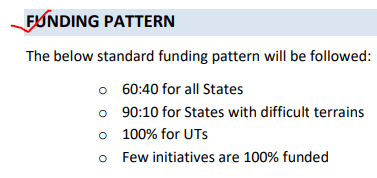

Current Affair 6:
New START Treaty
The Treaty between the United States of America and the Russian Federation on Measures for the Further Reduction and Limitation of Strategic Offensive Arms also known as the New START Treaty.
It entered into force on 5th February 2011.
It continues the bipartisan process of verifiably reducing U.S. and Russian strategic nuclear arsenals by limiting both sides to 700 strategic launchers and 1,550 operational warheads.

It will lapse in February 2021 unless extended for a five-year period.
Current Affair 7:
. Chagos Island
Mauritius called the UK an “illegal colonial occupier”, after it ignored a UN mandated deadline to return the Chagos Islands, a small archipelago in the Indian Ocean, to Mauritius.
Just see the map and countries involved in disputes.

Current Affair 8:
Earthquake Prone zones
What was in news?
Of 20 Defunct Seismometers in Maharashtra, 16 Are in Quake-prone Zones.
Only important thing here is Seismic Prone zones. We will learn that.
Earthquake - prone areas of the country have been identified on the basis of scientific inputs relating to seismicity, earthquakes occurred in the past and tectonic setup of the region.
Based on these inputs, Bureau of Indian Standards has grouped the country into four seismic zones, viz. Zone II, III, IV and V.
Of these, Zone V is seismically the most active region, while zone II is the least.
Broadly, Zone - V comprises entire northeastern India, parts of Jammu and Kashmir, Himachal Pradesh, Uttaranchal, Rann of Kutch in Gujarat, part of North Bihar and Andaman & Nicobar Islands.
Zone - IV covers remaining parts of Jammu and Kashmir and Himachal Pradesh, National Capital Territory (NCT) of Delhi, Sikkim, Northern Parts of Uttar Pradesh, Bihar and West Bengal, parts of Gujarat and small portions of Maharashtra near the west coast and Rajasthan.
Zone – III comprises Kerala, Goa, Lakshadweep islands, remaining parts of Uttar Pradesh, Gujarat and West Bengal, Parts of Punjab, Rajasthan, Madhya Pradesh, Bihar, Jharkhand, Chhattisgarh, Maharashtra, Orissa, Andhra Pradesh, Tamil Nadu and Karnataka.
Zone - II covers remaining parts of country.

Current Affair 9:
Starred Question in Parliament
Why in news?
The ongoing Winter Session of 17th Lok Sabha has taken all the 20 starred questions for the first time since 1972. The previous record was created during the 5th Lok Sabha (1972) when 14 starred questions were answered.
Question Hour: The first hour of every parliamentary sitting is termed as Question hour. It is mentioned in the Rules of Procedure of the House. During this time, the members ask questions and the ministers usually give answers.
The questions are of three types, namely,
- Starred questions: These are distinguished by an asterisk. It requires an oral answer and hence supplementary questions can follow. The list of these questions is printed in green colour.
- Unstarred questions: It requires a written answer and hence, supplementary questions cannot follow. The list of these questions is printed in white colour.
- Short notice questions: The matters of public importance and of urgent character are considered under this type of questions. It is asked by giving a notice of less than ten days. It is answered orally. The list of these questions is printed in light pink colour. In addition to the ministers, the questions can also be asked to the private members.
Question to private members: These questions are mentioned under Rule 40 of the Rules of Procedure and Conduct of Business in Lok Sabha. A question may be addressed to a private member if the subject matter of the question relates to some bill, resolution for which that member is responsible. The list of these questions is printed in yellow colour.
Current Affair 10:
New Snake Species Found in Arunachal Pradesh
Recently, a new species of non-venomous burrowing snake, named Trachischium apteii has been found in the forested area of the Talley Valley Wildlife Sanctuary in Arunachal Pradesh.

Current Affair 11:
JEHOLBAATAR KIELANAE
What is news?
Researchers have unearthed well-preserved middle ear bones from a new species of an extinct rodent that lived 145-66 million years ago in what is now northeastern China.

The study, published in the journal Nature, looked at fossils of the extinct rodent-like mammal — Jeholbaatar kielanae in China, and noted that these animals had a middle ear that is distinct from those of its relatives.
The fossil clues provide solid evidence of the morphology and formation of the inner ear bones, which are fully detached from the lower jaw. The new fossil reveals a transitional stage in the evolution of the surangular — a “reptilian” jawbone.
In these extinct mammals, the evolution of the middle ear may have probably been triggered by functional constraints on the bones and muscles involved in feeding.
This advance may lead to better understanding of the evolution of hearing.
Current Affair 12:
Hallmarking of Gold Jewellery and Artefacts
The Union Minister for Consumer Affairs announced that Notification for mandatory Hallmarking of Gold Jewellery & Artefacts across the nation will be issued on 15th January 2020 giving one-year time period for implementation.
The Minister said that hallmarking will benefit the poor people in villages and small towns who are not able to make out the purity of gold they have been buying.
The BIS (Bureau of Indian standards) Act 2016 has enabling provisions under Section 14 & Section 16 for making hallmarking of gold jewellery and artefacts mandatory by the Central Government. This will make it compulsory for all the jewellers selling gold jewellery and artefacts to register with BIS and sell only hallmarked Gold jewellery and artefacts.
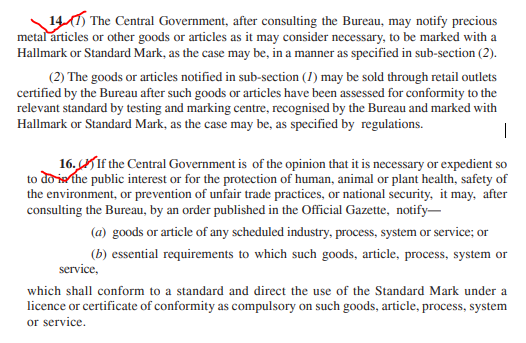
Also learn few things about Bureau of Indian Standard Act, 2016.
This Act functions under Ministry of Consumer Affairs.

Check here who is the ex-officio President of Bureau:

Current Affair 13:
Promotion of Technology in Agriculture sector

Union Minister of Agriculture informed Rajya Sabha about the various initiatives for promotion of technology in agriculture sector.
You will learn it and use whenever there is question about technology in Agriculture.
These are:
- The Indian Council of Agricultural Research (ICAR) has established a network of 715 Krishi Vigyan Kendras (KVKs) in the country mandated with Technology Assessment and Demonstration for its Application and Capacity Development (TADA–CD).
- Agro-advisories are given to the farmers through mKisan portal.
mKisan portal is a platform which provides web-based mobile advisory to farmers with the technological backstopping from Research Institutes and Agricultural Universities supporting farmers.
- Government is also using satellite data and GIS Technology for Crop Production Estimation, Horticultural Inventory, Site Suitability Analysis for crop expansion and Drought Assessment.
- Further, Sub Mission on Agricultural Mechanization (SMAM) provides a suitable platform for converging all activities for inclusive growth of agricultural mechanization by providing a ‘single window’ approach for implementation with a special focus on small & marginal farmers.
- Government is also implementing National Agriculture Market (e-NAM) scheme for transparent price discovery for remunerative prices for the farmers for their produce through competitive online bidding system.
- Under Marketing Research & Information Network (MRIN) Scheme, support is provided to the States towards setting up and maintaining connectivity with Agmarknet portal for collection and dissemination of market information on arrivals and prices of Agri-commodities.
Current Affair 14:
Landslides Risk Reduction and Resilience-2019
What is in news?
The Union Minister of State for Home Affairs inaugurated the 1st International Conference on “Landslides Risk Reduction and Resilience" in Delhi. It has been organized by the National Institute of Disaster management (NIDM).
The aim of this conference was to bring together all stakeholders to discuss/debate/disseminate practically useful knowledge, experiences, information and innovations for landslides risk reduction and resilience at national and international levels.
Noting more in news.
Introduction:
landslide is defined as the movement of a mass of rock, debris, or earth down a slope. Landslides are a type of "mass wasting (a geomorphic process)," which denotes any down-slope movement of soil and rock under the direct influence of gravity.
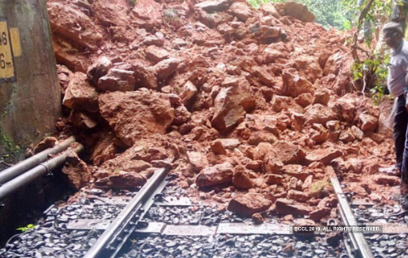
Several things can trigger landslides, including the slow weathering of rocks as well as soil erosion, earthquakes and volcanic activity.
Loss Due to Landslides
Based on Global Fatal Landslide database 2004-2016, globally in 4,862 distinct landslide events 55,997 fatalities were recorded (earthquake triggered landslide events were not taken in account in this study).
India landslides zone:

Parameters for Landslide Hazard Zones (LHZ):

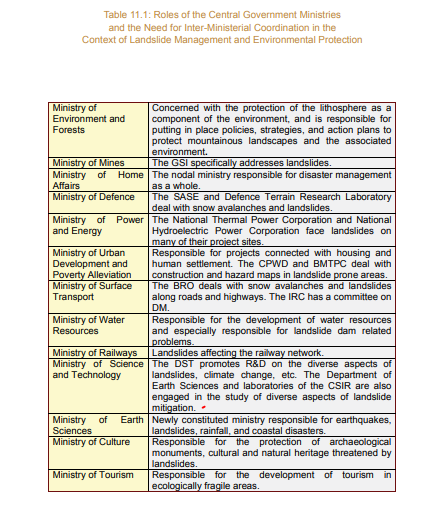
Current Affair 15:
MISSION 41K
What was in news?
Indian Railways has started Procurement of Power in Punjab for Northern Railway as Deemed Licensee under Open Access to reduce the cost of operations under “Mission 41K”.
Not very important but read once.
“Mission 41K” document was unveiled by Ministry of Railways in 2017. It targets for saving of Rs. 41,000 Crore through integrated Rail Energy Management System by 2025.


Current Affair 16:
UNICEF has launched ‘YuWaah’ Generation Unlimited in India

A national initiative - YuWaah - aimed at imparting skills among the youth and providing employment to more than 300 million young Indians was launched by Women and Child Development Minister Smriti Irani with an alliance of national and international partners, including UNICEF.
The target age group of YuWaah includes adolescent girls and boys.
YuWaah intends to create platforms to guide youth to market opportunities (career guidance, mentorship, internships, apprenticeships) and facilitate integration of career guidance in school education.
India is one of the first countries to launch the YuWaah national initiative linked to the global Generation Unlimited movement which began in New York in September 2018.
Current Affair 17:
LS Passes Bill Merging 2 UTs — Daman & Diu, Dadra & Nagar Haveli

A Bill which seeks to merge two Union Territories Daman and Diu, and Dadra and Nagar Haveli into one was passed by Lok Sabha on Wednesday, 27 November.

After the creation of the UTs of Jammu and Kashmir, and Ladakh, India has nine Union Territories. With the merger of Daman and Diu, and Dadra and Nagar Haveli, the number of UTs will reduce to eight.
Key features of the Bill include:
- The First Schedule to the Constitution specifies the territories that come under various states and UTs.
The Bill amends the First Schedule to merge the territories of the two UTs: (a) Dadra and Nagar Haveli, and (b) Daman and Diu. The merged territory will form the UT of Dadra and Nagar Haveli and Daman and Diu.
- Article 240(1) of the Constitution allows the President to make regulations for certain UTs, including the UTs of Dadra and Nagar Haveli, and Daman and Diu. The Bill amends the Article to replace these two UTs with the merged UT.
- Representation in Lok Sabha: The First Schedule to the Representation of the People Act, 1950 provides one seat in Lok Sabha to each of the two UTs. The Bill seeks to amend the Schedule to allocate two Lok Sabha seats to the merged UT.
- Jurisdiction of High Court: The Bill provides that the jurisdiction of the High Court of Bombay will continue to extend to the merged UT.
- Services under the UTs: There will be no change in the status of Group III and IV employees.
Current Affair 18:
Special Protection Group (Amendment) Bill, 2019
The Indian Special Protection Group (SPG) is a special force for providing proximate security to the Prime Minister of India and former Prime Ministers of India and members of their immediate families wherever in the world they are." It was formed in 1988 by an act of the Parliament of India.
Based on the recommendations of the Birbal Nath committee report, SPG came into existence in 1985. From 1985 to 1988, SPG was governed by an Executive Order and only in 1988 the SPG Act came into existence.
Under the Act, the Special Protection Group (SPG) provides security to the Prime Minister and his immediate family members.
It also provides security to former Prime Ministers and their immediate family members for a period of one year from the date on which they cease to hold the office. Beyond this period, the SPG security is provided based on the level of threat as decided by the central government.
Special Protection Group (Amendment) Bill, 2019: Salient Features
- The Bill amends this provision to state that the SPG will provide security to the Prime Minister, and members of his immediate family residing with him at his official residence.
- It will also provide security to any former Prime Ministers, and his immediate family members residing with him at the residence allotted to him.
- This security will be provided for a period of five years from the date on which he ceases to hold the office of Prime Minister.
- If the SPG security is withdrawn from a former Prime Minister, it will also be withdrawn from his immediate family members.
Current Affair 19:
Johads
What is in news?
The Haryana government has come out with a plan of rehabilitating over 16,400 Johads across the state in order to analyze pond water to ascertain its suitability for irrigation and other uses. The government has created a Pond Data Management Software and has started generating a 21-digit unique identification number each for such water body.
A johad is a community-owned rainwater storage wetland mainly used for harnessing water resources in the state of Haryana, Rajasthan, Punjab, western Uttar Pradesh.
Current Affair 20:
Govt launches Credit-linked Subsidy Services Awas Portal
Union Minister for Housing and Urban Affairs launched Credit-linked Subsidy Services Awas Portal (CLAP) in New Delhi.
The portal provides a transparent and robust real-time web-based monitoring system for credit-linked Subsidy Services (CLSS) beneficiaries. Using the portal, a beneficiary can track his application status in real-time.
Now what is this CLSS?
- The Pradhan Mantri Awas Yojana is an initiative that was introduced in 2015 to provide affordable housing to the urban poor population in India by 2022.
- This scheme focuses on slum rehabilitation, Credit Linked Subsidy Scheme (CLSS), making housing affordable for all, and offer a subsidy for survey-led independent house construction or renovation.
- Among the four focus areas mentioned above, CLSS is the only scheme that will be implemented as a central sector scheme.
- Through the CLSS, the Government of India aims at increasing the credit flow in institutions to meet the housing needs of the urban poor population in our country.
- Credit Linked Subsidy Scheme will be implemented by two central nodal agencies in India, namely Housing Urban Development Corp and National Housing Bank.



